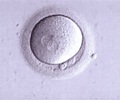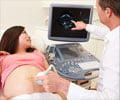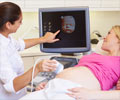Highlights
- Current methods for obtaining information on cancer is through biopsies which is very uncomfortable and invasive.
- A painless procedure for cancer detection has been identified using ultrasound along with nanodroplets.
- Nanodroplets phase change to microbubbles which causes release of vesicles from tumor cells into bloodstream, giving large amount of genetic materials to analyze.
"Currently the best way to get information is through a biopsy, which involves pushing 12 needles through an organ the size of a walnut. As you might imagine, it's a very uncomfortable and invasive procedure," says John Lewis, the Frank and Carla Sojonky Chair in Prostate Cancer Research at the University of Alberta and a member of the Cancer Research Institute of Northern Alberta.
"Patients with low grade prostate cancer can decide not to get treatment and instead monitor the disease, but monitoring usually involves a biopsy every year or so. Many people opt for surgery instead of more biopsies. It is clearly something we need to improve upon." Lewis added.
When used on tumors, the ultrasound technique causes the release of extracellular vesicles into the bloodstream. This releases genetic material into the blood allowing researchers to analyze it by just drawing a small amount of blood sample.
"With a little bit of ultrasound energy, nanodroplets phase-change into microbubbles. That's important because ultrasound can really oscillate these microbubbles," says Roger Zemp, professor of engineering at the U of A.
This led to the discovery of some genes that were indicative of the aggressiveness of the tumor. Genetic characterization of the tumor can be obtained in a non-invasive manner.
The technique with the ultrasound gives information about specific parts of a tumor. The genetic information can be used for personalized medicine giving information on specific mutation which would allow doctors to determine what medications would work best for treatment.
Using this technique, researchers are trying to increase the population of key vesicles released into the bloodstream.
Researchers hope to progress the work to clinical trials, and from there to real world applications, thanks to the accessibility of the technology.
The study is published in the journal Cancer Research and the research team is led by senior co-authors John Lewis and Roger Zemp.
Research
- Robert Paproski et al. Enhanced Detection of Cancer Biomarkers in Blood-Borne Extracellular Vesicles Using Nanodroplets and Focused Ultrasound. Cancer Research; (2016) DOI: 10.1158/0008-5472.CAN-15-3231
Source-Medindia















